
Houseplants Poisonous To Pets
Top 5 Popular Houseplants That Are Toxic To Your Pet
With more people working from home, indoor pot plants have become very popular again, but care should be taken by pet owners because many varieties are toxic to pets, particularly cats and dogs.
Before heading off to a nursery, make sure these popular houseplants aren’t on your list because they are toxic to your fur baby.
1. Devil’s Ivy (Epipremnum Aureum)
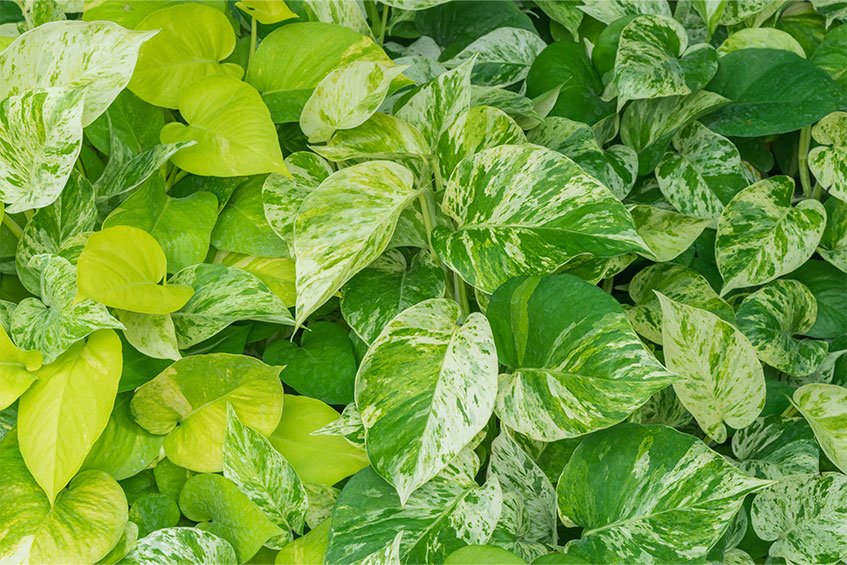
Also known as Pothos, Golden Pothos, Pothos Jade and Pothos Goldilocks, this attractive evergreen is renowned for their trailing vines, variegated patterns, and glossy heart-shaped leaves but is poisonous to pet cats and dogs.
Scientifically known as Epipremnum Aureum, this captivating plant originates from the Solomon Islands in the South Pacific and boasts over 15 recognised species.
Devil’s Ivy has leaves that contain small, needle-shaped crystals known as calcium oxalate. If licked or ingested by cats or dogs, it can cause irritation to the tongue, mouth, and throat, leading to drooling and redness almost immediately. Gastrointestinal tract irritation can further lead to vomiting and difficulty swallowing.
If a trailing vine with heart shape leaves is your thing, take a look at Peperomia. With over a thousand species under the Peperomia genus, there is a wide range of colours and shapes to choose from, making them a desirable addition to any home or office, and are pet friendly.
2. Peace Lily (Spathiphyllum)
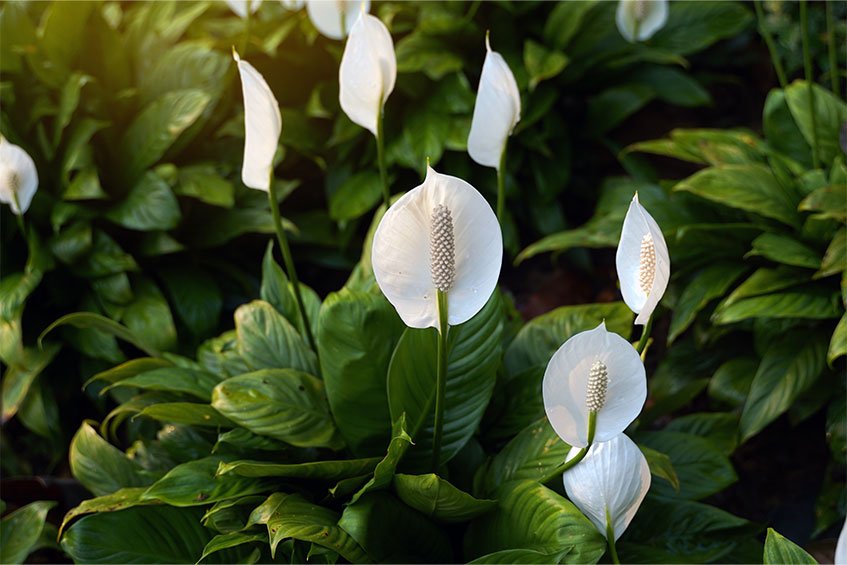
Spathiphyllum is a genus of about 40 species of flowering plants commonly called ‘Peace Lily’. Peace Lily, also known as Mauna Loa plant and White Sails, is a herbaceous perennial typically grown as a houseplant. While it can grow up to 2m tall, it more typically grows to 1m in an indoor pot setting.
Like Devil’s Ivy, this poisonous plant to cats and dogs contains calcium oxalate crystals, which can cause skin irritation, a burning sensation in the mouth, difficulty swallowing, and nausea, but it does not contain the toxins found in true lilies, which could cause acute kidney failure in cats like the Tiger Lilies.
A pet friendly alternative is the Cast Iron Plant (Aspidistra Elatior) which is virtually indestructible, making it an ideal indoor houseplant, but most importantly for cats and dogs, it’s non-toxic.
3. Jade Plant (Crassula Argentea)
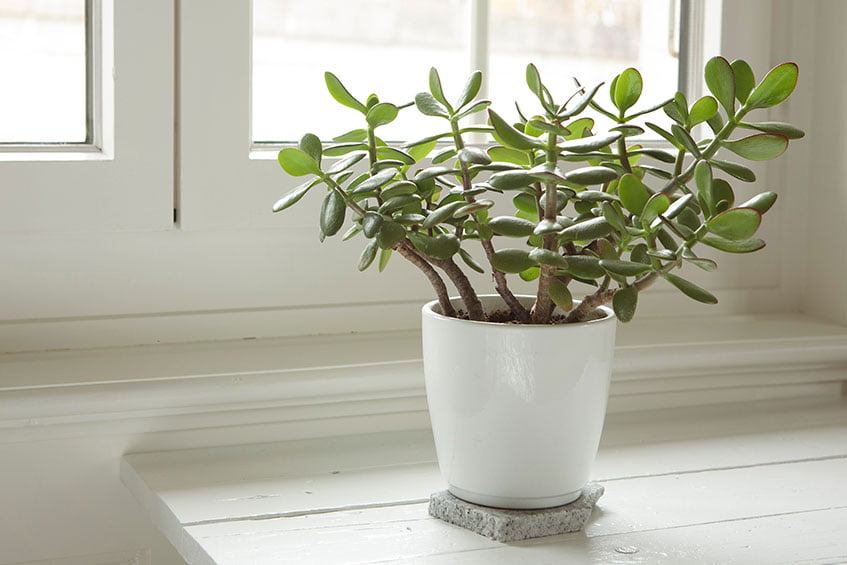
Sometimes referred to as the Chinese Rubber Plant, it’s considered to be a symbol of luck, so Jade Plants are a popular addition to many homes and offices. Unfortunately, your pooch or feline friend may feel a little less than lucky if they decide to have a taste!
If ingested it can cause vomiting, anorexia, lethargy and a stumbling gate, more so in dogs than cats.
A pet friendly alternative with a similar look, without the risk of poisoning can be found with Haworthia, Peporomia and Burrow’s tail succulent varieties.
4. Fruit Salad Plant (Monstera Deliciosa)
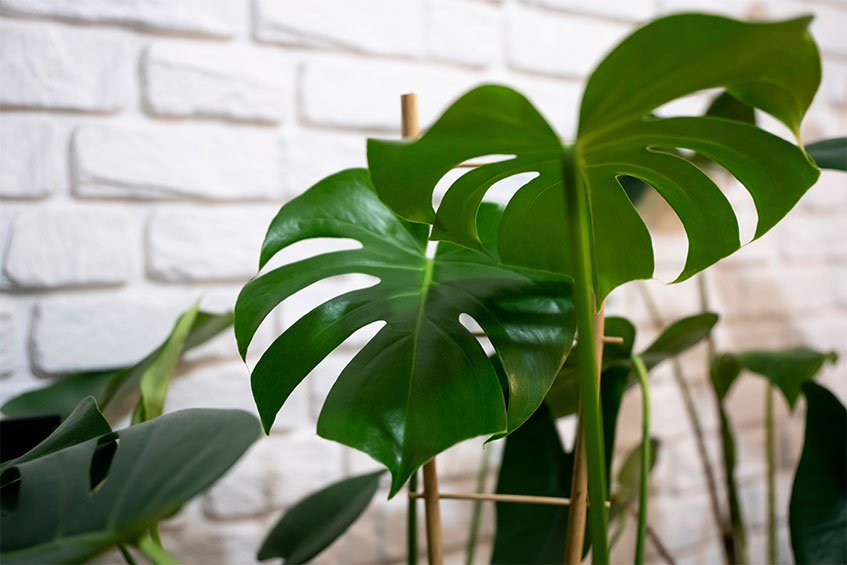
Commonly called Mexican Breadfruit, the Hurricane plant, Cut-leaf or Split-leaf philodendron, and Swiss Cheese plant, contains insoluble calcium oxalate crystals similar to other plants in the Araceae family and is poisonous to pets.
Chewing or biting into this plant will release these crystals causing tissue penetration and irritation the mouth and GI tract. Swelling of the upper airway can occur, making it difficult for your cat or dog to swallow and breathe.
An alternative that is pet friendly if you wish to add greenery to your room could be a Ponytail Palm (Beaucarnea Recurvata).
5. Sago Palm (Cycas Revoluta and Zamia spp.)
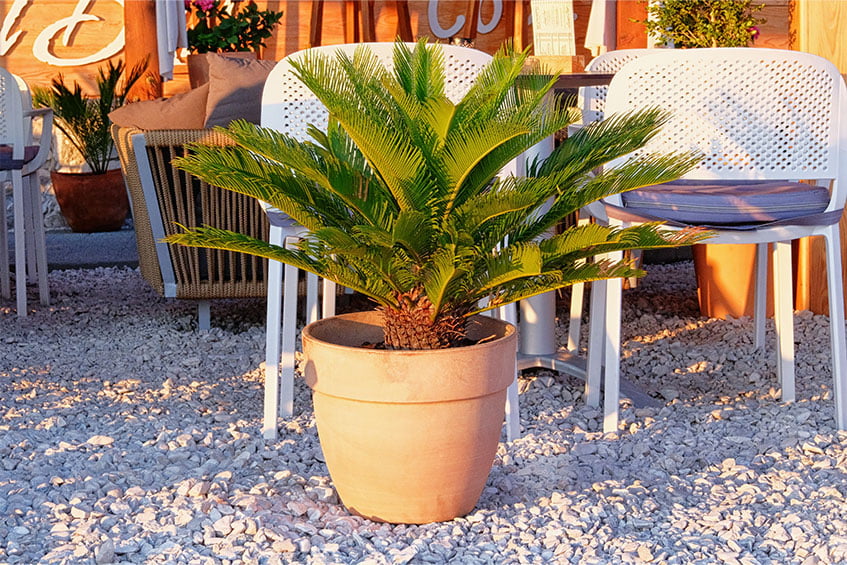
Known as a Cardboard Palm or Cycad, the Sago Palm is low maintenance but highly dangerous, not just to cats and dogs but inquisitive little humans too!
Cycads, such as the Sago Palm contain cycasin, a toxin that can cause liver damage, liver failure and death. Ingestion of any amount of any part of the Sago Palm by a pet is a life-threatening emergency requiring immediate veterinary attention.
Ingestion results in acute gastrointestinal signs such as drooling, inappetence, vomiting and diarrhea within 15 minutes to several hours after ingestion.
Central nervous system signs including weakness, ataxia, seizures and tremors can be seen within 4 hours and severe liver failure can be seen within 2-3 days post-ingestion.
Clinical signs of liver failure include vomiting, diarrhea, lethargy, inappetence, abnormal fluid accumulation in the abdomen, abdominal pain, jaundice, and black-tarry stool.
Aggressive decontamination and treatment should be initiated by veterinary surgeons. Even with aggressive treatment, the survival is about 50%.
If you’re after that palm tree look without the risk of poisoning, most true palms such as Areca species are nontoxic to pets.
Adding indoor household plants can have many benefits for both human and four-legged family members, including cleaner air and reduction of stress. By choosing nontoxic alternatives you can rest easy knowing that if your pet should happen to lick, chew or eat their leaves, they won’t end up taking a trip to the vet!
Important: This article is not, in any way, an exhaustive guide, and we will be adding to this list of poisonous plants to pets regularly. Always check if a plant is safe for your pets before bringing it home.
If you do suspect that your pet has ingested a toxic plant, seek out local veterinarian advice immediately.
- Cat Behaviour & Training 1
- Cat Care 1
- Cat Health 1
- Cats 3
- Dog Behaviour & Training 38
- Dog Care 1
- Dog Grooming 2
- Dog Health 1
- Dogs 42
After A Product or Service for Your Pet?
PetsBook's Pet Directory is the easy way to find everything you need to take care of your 'fur baby'.
ABN: 97 675 528 953






Charlie
Great article, very informative and an eye opener to me because I've seen many of these plants in houses with pets before.